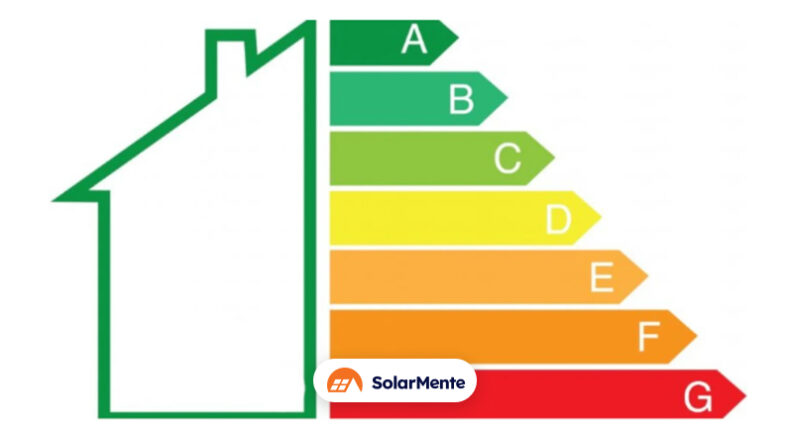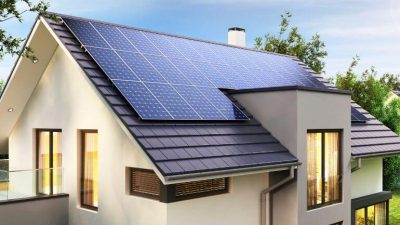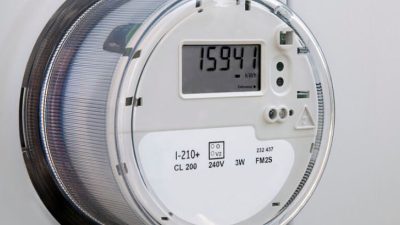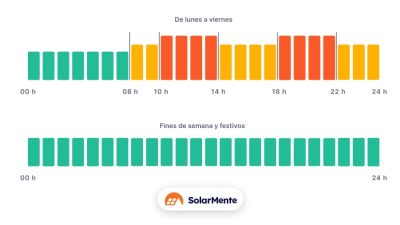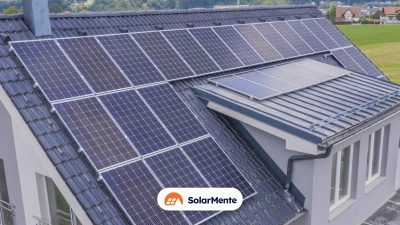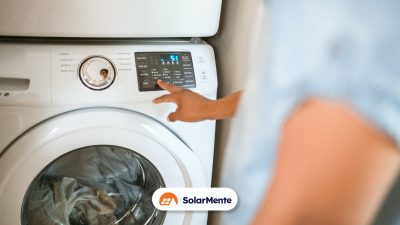You decided to take the step towards self-consumption and install panels on your roof.
And after several consultations on the Internet and with the tax authorities, you discover that in order to obtain a reduction in your income tax return, you need an energy certificate for your home.
This raises the following questions:
Do I need one before and after installation?
How do I apply for it?
How much will it cost?
These and other questions are answered in this post.
And we will also give you some tips to improve the energy rating of your home.
What is the energy efficiency certificate for a home?
It is nothing more than an official document on the energy characteristics of the home and it is drawn up by a specialised technician.
And you will need it in the following cases:
-
If you are going to sell or rent a property.
-
If you want to reduce the energy consumption of your home.
-
If you want to increase the IRPF deduction with the installation of your solar panels.
Bear in mind that if you are going to sell or rent it, according to Royal Decree 390/2021, it is compulsory to issue an energy efficiency certificate, both for new and existing homes.
How is it prepared?
We start from the domestic consumption that each household (single-family or community of neighbours) needs in a period of one year, taking into account standard operating conditions and occupancy.
For this calculation it is important to include
-
Hot water production
-
Heating
-
Cooling
-
Lighting
-
Ventilation
These are key, but you should also think about the type of windows, air conditioning or even exterior enclosure materials.
Often we are not aware of our low thermal insulation, but through doors or windows, we are letting out a high amount of energy that increases our electricity costs, especially in winter, with heating.
What information does a home energy certificate provide?
The content provided by the energy certificate for a home is as follows:
-
Identification of the property to be certified.
-
Details of the inspection, checks and tests carried out by the authorised technician.
-
Energy characteristics of the property. Detailed description of the thermal insulation, indoor air quality, lighting and other data to know its rating.
-
What is the energy classification of the property. As with electrical appliances, this is expressed with a label from A to G, i.e. from most to least efficient.
-
Compliance with the environmental conditions required of thermal systems.
-
Finally, it includes a series of improvements to raise the classification level if it is lower than A.
How to apply for the energy certificate?
Here we tell you how to obtain the energy certificate for your home step by step:
-
Contact several authorised companies and ask for a quote. This way you can have a wide range of offers and choose the most suitable one for you.
-
Once you have chosen the company, the technician will ask for the land registry, so that he can find out how old the property is and the surface area. He will also need old electricity bills and if any renovations have been carried out.
-
Now is the moment when the technician visits the property and makes the required inspections: measurements of the space, materials, enclosures, heating and air conditioning systems. Everything you need to validate the certificate. This is done by means of a computer programme approved by the State(Lider – Calener) that calculates the level of efficiency.
-
From here, the technician rates the energy efficiency level of the property and validates the certificate. Afterwards, you, as the owner, can register it with the corresponding body. In addition, the expert will include tips on how to improve the rating.
-
Finally, the certificate is registered with the competent body to verify that everything is OK and to record it. When it is registered, the label will be issued. But the process is explained in more detail in the following section.
How to register the energy certificate?
You already have the technician’s certificate.
Good.
Now you have to register it with the corresponding body in your autonomous community.
The Ministry of Industry, Energy and Tourism requires a series of documents that include the following information:
-
The programmes used to obtain the energy rating.
-
Guides and specifications on the technical-administrative application of the certificate.
-
Other documents that facilitate the application of the energy certification.
And this can be done in two ways:
-
In person
-
Internet
In both cases you need to attach the registration application document established by each autonomous community.
In any case, you have another possibility:
Go to the technicians.
If you find it too cumbersome, you can delegate this procedure to them.
Advantages of obtaining the energy efficiency certificate for your home
Getting the energy certificate has many benefits.
Here we tell you what they are:
-
Deductions of up to 60% on your tax return for energy efficiency improvements such as, for example, the installation of solar panels.
-
The property gains market value, as well as providing great benefits for tenants or buyers. In this article we explain the impact of solar energy on the value of the property.
-
Lower electricity bills and considerable energy savings.
-
Higher income: as these buildings are more in demand, they have lower rental vacancy rates and higher sales.
-
Makes for a more comfortable stay for housing tenants.
How much does an energy certificate for a property cost?
We cannot set a price here.
Because the technicians are free to set the rates they consider.
In addition, each case requires a certain amount of work.
Broadly speaking, the prices for obtaining the certificate depend on the following factors:
-
Labour costs.
-
The surface area of the property. In effect, the meters have an influence.
-
Administrative fees, which differ from one community to another.
-
Location of the property (here we must add the displacement).
-
The type of property, it is not the same for residential or commercial use. Nor is a single-family home the same as a community of neighbours.
In addition, the price may also include the delegation of the registration to the body by the technician, which increases the cost.
But be careful, because it also gives you peace of mind knowing that everything will be well presented.
That is up to you to decide.
What we do want to emphasise is that you should ask for several quotes. Compare and choose the best option for you.
Now we are going to give you an indicative range.
And we repeat the word “indicative”.
These amounts are just to give you an idea, because each autonomous community has its own rates and, as we have mentioned, the technicians are free to set the rates they consider.
That said, in the following table we give you the prices of the energy certificate:
|
Surface area |
Price |
|
Less than 80m2 |
50 – 70 € |
|
Between 81-120 m2 |
70 – 90 € |
|
121 m2 – 180 m2 |
100 -250 € |
The energy certificate is valid for a maximum of 10 years, and it is up to each autonomous community to establish the conditions for renewal.
When is the energy certificate compulsory?
The energy efficiency certificate for housing is compulsory for most properties, as established by Royal Decree 390/2021, with certain exceptions that we will see below.
But first, let’s start with the properties that must comply with the energy certificate.
-
Newly constructed buildings.
-
Buildings or parts of existing buildings that are sold or rented to a new tenant, when they do not have a current certificate.
-
Buildings or parts of buildings that belong to or are occupied by the Public Administration, provided that the total useful surface area exceeds 250m2 and that have public traffic.
-
Buildings or parts of buildings with a total useful surface area exceeding 500 m2, when they are intended for the following uses: administrative, commercial, health, educational, cultural, sporting, etc.
-
Buildings or parts of buildings in which reforms or extensions are carried out according to the assumptions established by the law that you can find here.
-
Buildings that are required to undergo a mandatory Technical Building Inspection or equivalent inspection.
In case of exclusion, the following buildings would be excluded:
-
Buildings of architectural or historical value, as long as the energy efficiency improvement alters their character or appearance.
-
Temporary buildings with an expected period of use equal to or less than two years.
-
Non-residential industrial, defence and agricultural buildings with low energy demand.
-
Buildings or parts of free-standing buildings with a total useful floor area of less than 50 m2.
-
Buildings that are purchased for demolition or renovation.
What deduction can I get if I improve the energy rating of my home?
The regulations establish different deductions in the income tax return (IRPF) for the improvement of the energy efficiency of the home, such as photovoltaic installations.
First of all, these amounts will be deductible whether it is your main residence or if you rent it. Deductions cannot be applied to properties affected by economic activity.
Having said that, we show you the deductible percentages:
-
20% for properties that achieve a reduction of at least 7% in heating and cooling demand. The maximum deductible amount will be 5,000 euros.
-
40% for properties that reduce at least 30% of non-renewable primary energy consumption. Also if you achieve energy rating A or B. The maximum applicable base is 7,500 euros.
-
60% for buildings for residential use and which, as in the previous case, reduce energy from non-renewable sources by at least 30%, as well as obtaining an A or B rating. In this case, the maximum amount to be deducted is 15,000 euros.
In any case, in this article you will find detailed information on the IRPF deduction for solar panels.
Remember: it will not be applicable to new homes.
As we do not have a previous and subsequent certificate, we cannot find out by what percentage the energy consumption generated by polluting sources has been reduced.
Furthermore, this deduction will apply to works carried out from 6 October 2021 to 31 December 2023, provided that they meet the conditions set out in this section.
How to improve the energy rating of a home
As we pointed out at the beginning of this article, the energy certificate includes a set of recommendations to improve the energy rating of the home.
And that, in addition, will have a significant saving for our pockets. This, plus the benefit for the environment.
On many occasions, the material or glazing is inadequate and we let both cold and heat escape (depending on the season). The insulation is also inadequate and the installations are energy-intensive, causing our electricity bills to skyrocket.
And these are the actions we can take in this respect:
-
Changing the building envelope to improve the insulation of the façade. We can reduce the demand for heating and cooling by means of good thermal insulation, e.g. windows.
-
Installing photovoltaic panels for self-consumption or condensing boilers that improve the energy efficiency of the home.
-
Improving the performance of different stations such as hot water, lighting or heating.
But it is not only enough to make changes in the building; each one of us can reduce our energy consumption with small changes in our habits.
For example, using LED bulbs, optimising the contracted power or using more efficient appliances.
In this article we go into detail and give you tips on how to save on your electricity bill.
Fines for selling or renting without an energy certificate
Lastly, bear in mind that, in the event of renting or selling a property without an energy certificate, there are financial penalties for the owner, in accordance with Law 8/2013.
Let’s see what they are depending on the seriousness of the infringement:
-
If you do not mention the rating in the advertisements for the sale or rental of the property, the amount will be between 300 and 600 euros.
-
Failure to certify or register the certificate, has a penalty of between 601 and 1,000 euros.
-
Any manipulation of the energy rating, between 1,001 and 6,000 euros.
-
As a person who is going to buy or rent a property, you should ask for the energy certificate. The fine can also be imposed on you.
Anyway, you have the detailed information in this link.
Make your home more energy efficient with solar panels and enjoy a high tax deduction
The energy certification covers much more than appliances and electronic devices in your home.
It has become a document that has gained prominence, especially for property owners.
Either because they are going to sell or rent the property, or because they want to enjoy a deduction in their tax return for using more sustainable energy means.
So, improving the energy rating, in one way or another, brings great benefits.
If you are looking to reduce energy costs for your home by installing solar panels:
Entering this link you can calculate how much to save each month.
See you inside.

